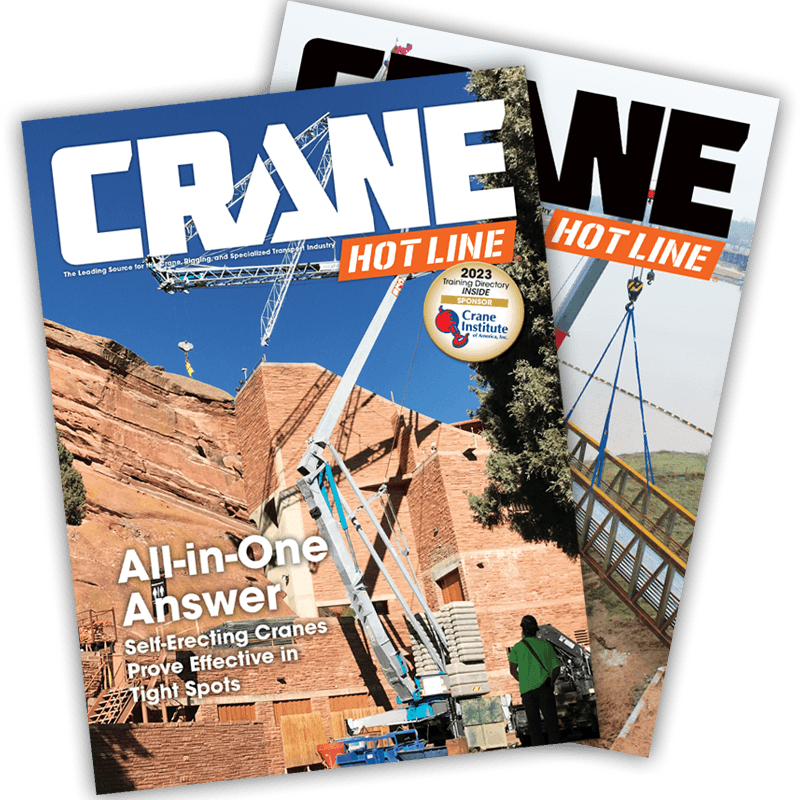Psst! Want Some Insider Tips on Buying a Telehandler?
Mustang Region Sales Manager Steve Challoner has more than 15 years experience in the telehandler industry. He can be reached at schalloner@mustangmfg.com.

Steve Challoner
March 7, 2007 • Being able to trust your dealer certainly lessens the load when it comes to making a sound telehandler purchase, especially if you're new to the product category. But isn't it nice to come to the table armed with your own “insider” information?
Tip #1 Prioritize the Profile
Many contend that the choice between high- and low-profile boom designs comes down to customer preference, but that shouldn't be the only factor determining your choice of configuration. While a user may be more comfortable operating a high-mount boom, he or she needs to be realistic about how and where the machine will be used. For instance, if the unit will be on the road with regular traffic more than it'll be transported from site to site, a 365-degree view • which a low-mount boom provides • could be the better choice.
On the other hand, an operator with a natural or experience-based preference for low-mount designs needs to consider the most typical application the telehandler will be used for. Low-mount booms are great for ground engagement and loader work, but the visibility may not be as good for pick-and-place tasks.
Tip #2 Safe Platform Use Can Be a Lofty Goal
A common misconception many telehandler buyers hold is that these machines are automatically appropriate for person-lifting applications, just by virtue of their boom. What some people may not understand is that there are specific rules and regulations governing the use of work platforms on telehandlers.
These rules not only ban the use of homemade platforms and other obvious dangers, but they also regulate which machines can be used as person-lifting units. These regulations require that machines be equipped with disabling functions, like the Mustang Work Platform Safety (WPS) System.
Systems like the WPS allow for the safe use of a personnel work platform by sensing the attitude of the machine, neutralizing the transmission, applying the parking brake, disabling the fork tilt and auxiliary hydraulic circuits, and restricting the use of the frame leveling circuit.
The ability to operate the boom and/or disable functions of a machine from the actual work platform, while not common, is available from certain manufacturers. This is the best set-up for a work-platform equipped machine because it puts control in the hands of the worker in the platform.
Tip #3 Be Cautious of Universal Attachments
An industry buzz term, “universal attachment,” does not always have a place in the telehandler market. For example, many equipment buyers believe that a universal loader attachment can be used on a telehandler, but this is rarely the case.
Unless the telehandler is specifically made for loader operations, the telehandler boom is not designed to take the down and side loads required of many loader attachments on the market today. Conversely, many loader attachments may not be rated for the weight and power that telehandlers have. Telehandler buyers may be shocked (after purchasing a unit they think can handle their “universal” loader attachments) to learn this truth.
Another myth of the “universal” attachment is that there is generally a crossover between telehandler brands. But that is not the case. What works on one brand is not necessarily going to work on another.
What's more, each telehandler attachment should come with its own load chart. Determining the weight of a load requires that a user take into account the weight of the attachment lifting the load. Not every manufacturer provides attachment-specific load charts with a machine purchase, so be sure to request them.
Tip #4 Buy Only What You Need
Owning the biggest machine on the block can be enticing, but it doesn't make much sense if your average job calls for a unit with half the reach or capacity. Buyers have a tendency to over-purchase because they're afraid of buying too small and having to turn down a future job.
Do not give in to the temptation to buy for your most extreme needs. If the kind of job requiring the big specs only comes along 10 percent of the time, it may be smarter to buy the next size down for 90 percent of your work and rent for the rest.
Yes, it's smart to invest in a machine that will give you added power, but if your typical job doesn't require the extra feet of lift or the extra pounds of capacity, then why spend the money on the bigger unit • which will not only require a larger investment, but will also take more money to operate, maintain and transport?
Tip #5 Don't Leave Until You Understand It
Load chart comprehension may be the most frequently overlooked portion of the equipment-buying process, especially for new buyers. The main reason this is so confusing is because different manufacturers use different methods for communicating weights and loads. Mustang puts numeric labels and a large boom angle indicator on the boom, visible from the cab. Some manufacturers use letters or other boom markings to allow the operator to see which weight capacity zone he or she is operating in.
Make sure you understand how the load chart works before you take that machine home to your crew.
Tip #6 It's OK To Insist On Run-of-the-Mill
While demanding the ordinary is counter-intuitive for most shoppers, it's desirable for construction equipment buyers. It only takes one bad experience with extended downtime to drive home the importance of owning a telehandler with parts common to the industry.


